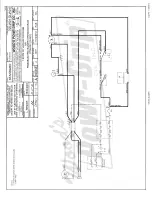
FL1-DC: #35026
Rev 6.0/11-20
20
T
ESTING
Perform the following test to determine whether or not a load surface is too porous or rough:
Lifter/Load Compatibility Test
1
1)
Make sure the vacuum generating system is functioning correctly (see
2)
Thoroughly clean the load surface and the vacuum pad (see
2
3)
Place the load in the
flat
position.
4)
Attach the vacuum pad to the load as previously directed.
5)
After the vacuum pump stops running, disconnect the battery connector (see
3
6)
Take precautions in case
load should fall during test.
Raise the load a minimal distance, to make sure it
is supported by the lifter.
7)
Watch the vacuum gauge:
Starting from a
vacuum level of 16" Hg [-54 kPa], the lifter must maintain a vacuum level greater than
12" Hg [-41 kPa] for 5 minutes.
4
If not, lifting this load requires additional precautions
(eg, a load sling). Contact WPG for more information.
8)
Lower the load
after
5 minutes or
before
the vacuum level diminishes to 12" Hg [-41
kPa].
1.....
The
“Pad-to-Load Friction Coefficient”
can affect the outcome of this test.
2..... Contaminated loads can cause the vacuum pump to run frequently or continuously. Since excessive pumping quickly reduces battery energy,
clean the load whenever possible.
4..... Move the valve handle to the “release” position (power
off
) before reconnecting the battery.
5..... Under CE requirements, the lifter must maintain a vacuum level
greater than 8" [-27 kPa]
.
INSPECTIONS AND TESTS
Содержание FL1HV11DC
Страница 2: ...FL1 DC 35026 Rev 6 0 11 20 2...
Страница 6: ...FL1 DC 35026 Rev 6 0 11 20 4 SPECIFICATIONS...
Страница 30: ...FL1 DC 35026 Rev 6 0 11 20 28...









































